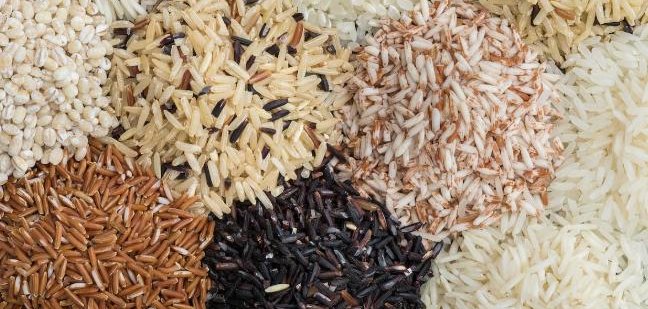Removing Impurities from Rice and Wheat Grains with Magnetic Separation
1. Improved Grain Quality: Beyond just removing ferrous impurities, consider the impact on the final product.
The absence of metal fragments contributes to a cleaner, more uniform batch of grains. This can lead to:
- Enhanced Appearance: Consumers expect clean-looking grains. Removing dark metallic particles improves the visual appeal.
- Better Texture: Metal contaminants can sometimes damage grains, affecting their texture after cooking. Removing them helps maintain the desired consistency.
- Increased Shelf Life: While not a direct impact, removing impurities can indirectly contribute to better storage conditions by preventing potential contamination or reactions.
- Higher Market Value: Grains with fewer impurities often command a higher price in the market due to their superior quality.
2. Increased Safety: The implications of metal contamination go beyond just equipment damage.
The absence of metal fragments contributes to a cleaner, more uniform batch of grains. This can lead to:
- Enhanced Appearance: Consumers expect clean-looking grains. Removing dark metallic particles improves the visual appeal.
- Better Texture: Metal contaminants can sometimes damage grains, affecting their texture after cooking. Removing them helps maintain the desired consistency.
- Increased Shelf Life: While not a direct impact, removing impurities can indirectly contribute to better storage conditions by preventing potential contamination or reactions.
- Higher Market Value: Grains with fewer impurities often command a higher price in the market due to their superior quality.Think about the potential harm to consumers:
- Preventing Physical Injury: Even small metal fragments can pose a risk of cuts, abrasions, or dental damage if ingested.
- Reducing Risk of Heavy Metal Contamination: While the focus is on ferrous metals, their presence might indicate other unwanted materials. Removing them contributes to overall food safety.
- Protecting Processing Equipment: Metal pieces can damage rollers, grinders, and other machinery, leading to costly repairs and downtime. Magnetic separation acts as a crucial preventative measure.
3. Efficient Processing: Highlight the practical advantages of integrating magnetic separation into the workflow:
- Continuous Operation: Magnetic separators can often operate continuously without significant interruption to the grain flow, ensuring a smooth and high-throughput process.
- Reduced Manual Inspection: By automatically removing metallic impurities, the need for manual sorting and inspection can be significantly reduced, saving time and labor costs.
- Ease of Integration: Modern magnetic separators are designed to be easily incorporated into existing conveyor systems and processing lines with minimal modifications.
- Low Maintenance: Generally, magnetic separators have few moving parts, leading to lower maintenance requirements and reduced operational costs.
Further Explaining How Magnetic Separation Works:
You mentioned powerful magnetic fields attracting ferrous impurities. We can elaborate on the types of magnetic separators used and the science behind them:
- Types of Magnetic Separators: Briefly describe common types used in grain processing, such as:
- Magnetic Plates and Grates: Simple and cost-effective for capturing larger ferrous objects in gravity-fed or shallow flow lines.
- Magnetic Drums: Used for continuous, high-volume separation, where grains pass over a rotating magnetic drum that attracts and discharges ferrous material.
- Suspended Magnets: Placed above conveyor belts to attract and remove ferrous contaminants from a moving stream of grain.
- Magnetic Pulleys: Installed as head pulleys on conveyor belts, attracting ferrous material as the belt moves.
Expanding on the Applications in Grain Processing:
Rice Processing: Provide more specific examples of where magnetic separation is crucial in the rice milling process:
- Post-Harvest: Removing metal fragments introduced during harvesting or transportation.
- De-stoning: While magnetic separation primarily targets ferrous materials, it can work in conjunction with de-stoning equipment to provide a more comprehensive cleaning solution.
- Polishing and Grading: Ensuring that the final polished rice is free from any metallic contamination.
- Packaging: Preventing any metal particles from ending up in the final packaged product.
Wheat Processing: Detail the applications in wheat milling:
- Incoming Grain Cleaning: Removing metal from harvested wheat before it enters the milling stages.
- Before Milling: Protecting the delicate milling equipment (rollers, sifters) from damage caused by metal.
- Flour Production: Ensuring the final flour product is free from ferrous contamination, which is critical for food safety and quality.
- Animal Feed Production: Even in feed production, removing metal protects animal health and processing machinery.

Reinforcing Why to Choose MagSmith Magnetic Industry:
Go beyond the listed points and highlight what makes MagSmith stand out:
- Expertise: Instead of just saying “extensive experience,” perhaps mention the number of years in the industry, specific certifications, or the types of challenges your team has successfully addressed.
- Quality Products: Elaborate on the materials used in manufacturing your separators (e.g., high-strength neodymium magnets, food-grade stainless steel), their durability under demanding conditions, and any quality control processes you have in place.
- Customized Solutions: Provide examples of how you tailor your solutions. Do you conduct on-site assessments? Do you offer different sizes and configurations of separators? Do you work with clients to integrate your technology seamlessly into their existing lines?
- Innovation: Briefly mention any research and development efforts or unique features of your magnetic separation technology.
- Customer Support: Highlight your after-sales service, technical support, and commitment to customer satisfaction.
Conclusion:
MagSmith Magnetic Industry is dedicated to empowering the grain processing industry with cutting-edge magnetic separation solutions. Our expertise, high-quality products, and commitment to customization ensure that your rice and wheat grains meet the highest standards of quality and safety, while also optimizing your processing efficiency. Contact our team of specialists today for a consultation and discover how our tailored magnetic separation solutions can benefit your specific needs.

